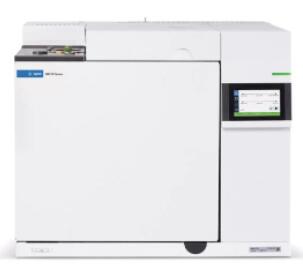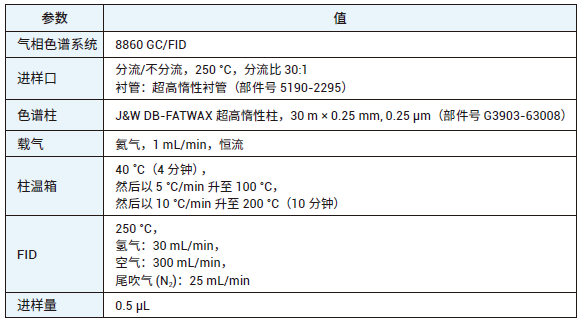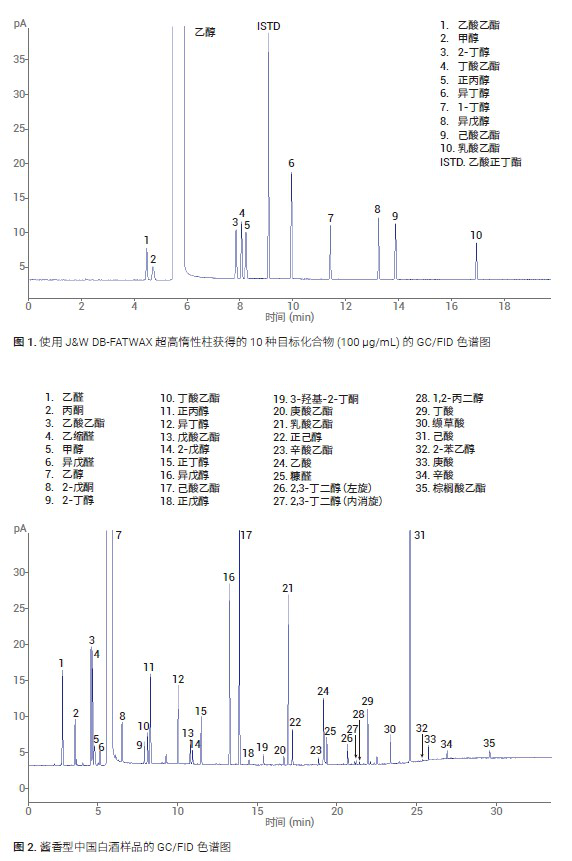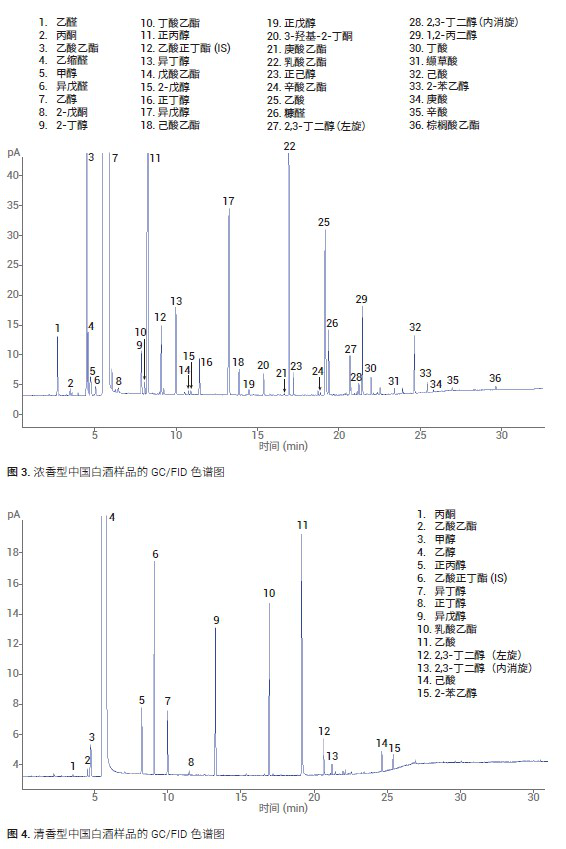Taste and smell of alcohol products is to evaluate the quality of an important indicator of the substance of the wine collection of volatile flavor and be measured to determine its composition and content, and to explore the causes of the differences between their flavors produced with liquor.
Â
The quality and flavor of alcoholic beverages is directly related to the complex blending ingredients in the beverage. Some ingredients have a fragrant aroma and a pleasant mouthfeel, while others may have unpleasant flavor or mouthfeel characteristics. Distilleric producers and regulators around the world have a unique understanding of these factors, so they can combine their sensory skills with modern analytical tools such as gas chromatography and GC/MS. When wineries expand their trade, export and fight against counterfeiting and protect their own brands, it is essential to control the quality of flavors in wine and meet regulatory requirements.
Â
Distilled spirits are ethanol-water based complexes containing hundreds of flavor compounds, including alcohols, aldehydes, organic acids and esters. The ratio of these trace components is critical to determining the flavor and quality of the liquor. For manufacturers, the monitoring and detection of flavor compounds in raw materials and flavor compounds in subsequent saccharification, fermentation and distillation processes is also extremely important. Chinese white wine is famous for its rich flavor and long aftertaste. According to the scent type, Chinese liquor can be divided into sauce-flavored, strong-flavored, fragrant, and rice-flavored.
Â
For a long time, people's research on liquor mainly focused on the evolution of microorganisms and the formation of flavor substances in the fermentation process, and analyzed the effects of main aromatic compounds (such as esters, acids, alcohols and aldehydes) on typical liquor types. The concentration and ratio of ethyl acetate, ethyl lactate and ethyl hexanoate play a decisive role in the flavor of liquor. In order to protect the health of drinkers, the concentration of methanol, isobutanol and isoamyl alcohol should be strictly controlled during the production of liquor. In this application note, some actual samples were injected into the Agilent 8860 GC system and analyzed for specific flavors of white spirits. At the same time, quantitative analysis was performed on 10 compounds commonly found in liquor.
Â
Experimental part
The analysis was performed using an 8860 GC equipped with an FID. Sample introduction was done using an Agilent 7693A automatic liquid sampler with a 5 μL syringe. Table 1 lists the instruments and conditions used.

Sample preparation
A mixed standard stock solution was prepared by adding a predetermined amount of each standard compound to a micro syringe. A stock solution of 10 compounds was prepared in a 60:40 ethanol:water solution (v/v) at a concentration of 1000 μg/mL for each compound.
Â
Prepare 6 vials for each calibration concentration and obtain the desired concentration by adding different amounts of stock solution to the aqueous ethanol solution. The concentration of the calibration standard solution prepared was 10, 30, 50, 100, 500, and 1000 μg/mL, respectively. An internal standard (IS) was added to each calibration concentration, and the corresponding IS concentration was 440 μg/mL.
Â

 Â
Â
Â

Â
Â
Results and discussion
In order to develop a reliable method for monitoring flavors in white wine, analysis was performed using an 8860 gas chromatograph equipped with an autosampler and FID. Figure 1 shows a typical chromatogram of 10 standard compounds and 1 internal standard obtained at 100 μg/mL.
 Figure 2, Figure 3 and Figure 4 are sample chromatograms of the main component analysis of different Chinese liquor samples. The system achieves excellent resolution and peak shape for alcohols, aldehydes, organic acids and esters. As shown in Figure 2, baseline separation was achieved with ethyl acetate, acetal, and methanol. Methanol has a strong polarity and is easy to tail, but in this method, its peak shape is sharp and symmetrical.
Â
Â
in conclusion
In this application note, the 8860 GC with autosampler and FID provides a reliable and economical solution for the analysis of alcohols, aldehydes, organic acids and esters in white spirits. EPC Control and J&W DB-FATWAXUI columns provide excellent peak shape, resolution, and excellent reproducibility.
Â
references
1. Y. Kenneth L.; Zhou, Y. Analysis of distilled spirits using the Agilent J&W DB-WAX Ultra Inert Capillary Gas Chromatography column, Agilent Technologies Application Note, publication 5991-6638EN, 2016
2. Cai, XY; Yin, JJ; Hu, GDDetermination of Minor FlavorComponents in Chinese Spiritsby Direct Injection Technique with Capillary Columns. Chin. J.Chromatogr. 1997, 15(5)
Rapid test kits are designed for use where a preliminary screening test result is required and are especially useful in resource-limited settings.
• High quality
• Quick (10 minutes to 2 hours) and easy to perform .
• Tests based on agglutination, immuno-chromatographic, immuno-dot, and/or immuno-filtration techniques.
• Are suitable for individual or a limited number of samples, and require little or no additional equipment, which make them more economical than ELISAs in fully equipped laboratories.
• Possibility to store at room temperature for an extended period of time.
• Same-day results provide timely treatment possibility.
[Test Principle]
Urobilinogen:Urobilinogen with diazonium salt produce red violet dyes in strong acid medium.
Bilirubin:The direct bilirubin with dichlorobenzene diazonium produce azo dyes in acid medium.
Ketone:The acetoacetic acid and sodium nitroprusside cause reaction in alkaline medium,which produces red violet compound.
Blood:Hemoglobin acts as peroxidase. It can cause peroxidase release neo-ecotypes oxide (O).(O) oxidizes the indicator and make the color change subsequently.
Protein:It is based on a specific pH indicator attracted by cation on protein molecule,the indicator further ionized and make the color change.This phenomenon is called protein-error-of -indicator principle.
Nitrite:Nitrite and aromatic amine are diazotized to form a diazonium compound.The diazonium compound reacts with tetrahydrobenzo(h)quinolin 3-phenol produce the red azo dye.
Leukocyte:Pyrrole amino acid ester produce free phenol under the hydrolysis of esterase in neutrophile granulocyte,the free phenol couple with phenyl diazonium salt produce purple azo dyes.
Glucose:The glucose oxidized by glucose oxidase catalyzes the formation of glucuronic acid and peroxide hydrogen.Peroxide hydrogen releases neo-ecotypes oxide(O)under the function of peroxidase.(O)oxidizes tetramethyl benzidine, which make the color change.
Specific Gravity:Methyl vinyl ether and maleic acid copolymer is weak acid (-COOH) exchanger,the M+ cation (the major is Na+) in urine reacts with the exchanger and release hydrogen ion,hydrogen ion reacts with indicator produce color change.
pH:The method of pH indicator is applied.
Ascorbic Acid:Ascorbic acid deoxidizes the 2.6-dichlorphenolindophenol dye into colorless in alkaline medium.
Microalbumin:Sulfone phthalein dye has high sensitivity to microalbumin by the method of protein error.
Creatinine:Creatinine with 3,5-Dinitrobenoic acid produce violet compound in alkaline medium.
Calcium:Calcium ion reacts with methyl bromothymol blue produce color change in alkaline medium.
Rapid Test Kit,Drug Abuse Test Kit,Rapid Diagnostic kit,Fast Test Kit
Changchun ZYF science and technology CO.,LTD , https://www.zyf-medical.com